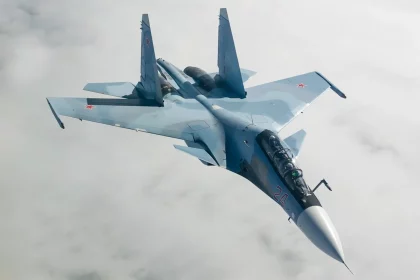Leading From the Front: Lt Gen Anindya Sengupta Shows What True Commander Looks Like
Hands-On Leadership by Lt Gen Sengupta during Himalayan Drill reinforces Troop Morale and Operational Readiness.
17 Squadron ‘Golden Arrows’ Honoured With Unit Citation on 93rd Indian Air Force Day
Unit Citation Awarded to 17 Squadron for Heroic Role in Operation Sindoor During 93rd IAF Day Celebrations.
MoD and ADA to Finalize Industry Partners for AMCA Program by Mid-2026
Private Sector to Play Key Role in Developing India’s First Indigenous Fifth-Generation Stealth Fighter.
IAF Confirms Operational Use of Rampage Missiles on Su-30MKI Fighters During Operation Sindoor
First Operational Deployment of Rampage Missiles on Su-30MKI Jets Enhances IAF’s Precision Strike Capability.
Two Commandos from 5 Para SF Go Missing in Dense Kashmir Forest
The incident underscores the perilous nature of operations in Kashmir, where elite units like 5 Para routinely face ambushes, minefields,…
Ukraine Claims Capture of Indian Man Fighting for Russia; MEA Yet to Verify Reports
Ukraine Claims Capture of Indian Fighting for Russian Army; India Begins Verification.






